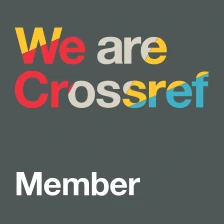Debate - The Trafficking Protocol and the Anti-Trafficking Framework: Insufficient to address exploitation
DOI:
https://doi.org/10.14197/atr.201215412Abstract
The Trafficking Protocol[1] has shaped and advanced a global movement against human trafficking; notably through establishing a global definition and creating criminal justice remedies befitting an international crime.[2] Borne out of and including the Protocol, a global anti-trafficking framework has emerged. This framework reflects these two central tenets at international, regional and national levels and includes initiatives by States not party to the Protocol, such as Singapore. However, the emphasis on these tenets, which comprise only part of a robust anti-trafficking strategy, has rendered the existing framework insufficient to address exploitation.
[1] In full: Protocol to Prevent, Suppress and Punish Trafficking in Persons, Especially Women and Children
[2] K H Heinrich, ‘Ten Years After the Palermo Protocol: Where are Protections for Human Trafficking?’, Human Rights Brief 18, no.1, 2010, retrieved 5 January 2015, http://digitalcommons.wcl.american.edu/cgi/viewcontent.cgi?article=1145&context=hrbrief ; K E Hyland, The Impact of the Protocol to Prevent, Suppress and Punish Trafficking in Persons, Especially Women and Children, Human Rights Brief 8, no. 2, 2001, retrieved 5 January 2015, http://digitalcommons.wcl.american.edu/cgi/viewcontent.cgi?article=1492&context=hrbrief
Metrics
Published
How to Cite
Issue
Section
License
The Anti-Trafficking Review has a policy of licensing under the Creative Commons Attribution License (CC-BY). Under the CC-BY license, the public is free to share, adapt, and make commercial use of the work. To protect our work and that of our authors, however, users must always give proper attribution to the author(s) and the Anti-Trafficking Review (i.e. with a complete bibliographic citation and link to the Anti-Trafficking Review website and/or DOI).
The Anti-Trafficking Review promotes the sharing of information, and we therefore encourage the reproduction and onward dissemination of articles published with us.








